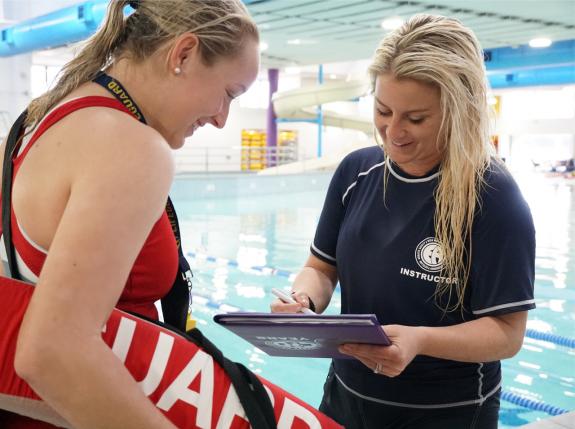
One of the many elements in creating a successful aquatic operation is adapting your training to the local culture. Keeping a high standard in aquatic training (teaching everything correctly and exceeding the standards) is crucial in your training, but what is also crucial is adjusting to the culture of your local demographics. Upper management, instructors, and lead lifeguards alike need to commit on how to make sure that they are teaching to the standards, not cutting corners, and somehow make sure they are approaching the lifeguard team in a way that speaks their culture communication language.
To establish a strong training foundation, you have to learn how to take the type of workplace culture you want to establish and decide how to approach your local geographic culture without clashing.
Here are some examples. A large waterpark that handles thousands of park guests per day is going to need tough and assertive lifeguards who will be proactive, quick on their feet (figuratively and literally), and not shy to enforce rules. Their training may be very steadfast. Now, for a small community pool who may have less than 100 people visit in a day will have a very different culture. Yes, you STILL want lifeguards who are going to be proactive and quick to respond and do their job accordingly. However, approaching with a steadfast-like training style in this situation may be viewed as extreme and to be honest, perhaps a little ridiculous. You will lose employees and their respect quicker than you will gain.
Do you have in mind now what kind of culture you would like to create? Great!
But now, what if you find yourself in a situation where you are trying to build your work culture one way, but your locale culture is going in a very different direction and not meeting the bar you are trying to set? Your first step is to figure out what their culture communication is. No, not linguistics – culture communication. How is respect communicated? What about discipline? Praise? Leadership and instructors should determine how they are going to incorporate the work culture they desire with the local culture and establish a facility culture standard from day one of training.
We also need to make sure this culture continues to carry over into our daily critiquing and in-service training. Remember our "Strictness is Structure" article? The article emphasized how a manager should not be inconsistent with rule enforcement - strict with one employee but then cut corners for another... Work morale would quickly collapse. The same applies to a culture set up – how the manager, supervisor, and instructor set up the culture for employees in the beginning—from the interview to the lifeguard class—should be continued into every shift.
When hiring and training younger employees such as high schoolers, their culture communications can be heavily influenced by what schools they attend. This is especially true for aquatic facilities that recruit from different counties. For the most part, cultures are usually similar just based on the city’s culture, however, sometimes the schools’ differences are easily distinguishable. Depending on the school culture they have reigned from, how their teachers and coaches showed respect, structure, and discipline, all come into play on how they will better receive your training.
High standards and respect can be easily established in your workplace – just figure out the culture language first!
